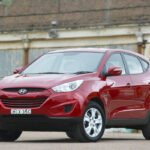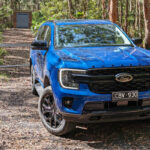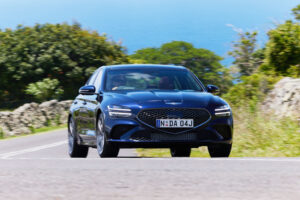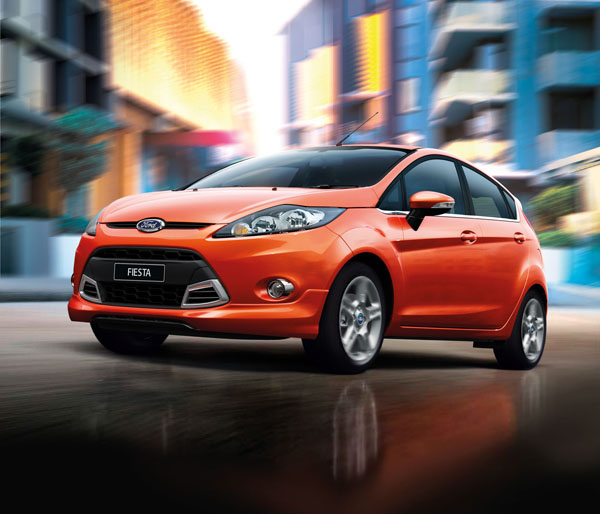
2011 Ford Fiesta Zetec
Ford Fiesta is quite a small car that was mainly sold in the UK and Europe. A reasonable
number came Downunder as well, but they didn’t sell in as large numbers than their bigger
brothers.
The Ford Fiesta was sold as a three-door or five-door hatchback and a four-door sedan,
though not all were on offer in the new car market at all times.
The front seats are larger than average for a car in this class and are reasonably
comfortable, though some may find them on the firm side in the European manner.
Large adults may find getting in and out of the rear of the three-door a hassle, but once
they are in there, they will find them reasonably comfortable. That’s if they are broad in the
beam as well as tall in which case there’s likely to be only enough width for two to get
comfortable.
The Fiesta comes with a variety of engines. Most use a 1.4- or 1.6-litre petrol engine and
offer a couple of drivetrain options. The WZ Fiesta, introduced in August 2013, has a
fascinating little three-cylinder 1.0-litre turbo-petrol that gives sparkling performance.

2014 Ford Fiesta Ambiente
Even better is the 1.6 turbo-petrol in the Fiesta ST, it has strong torque over a wide spread
of revs and many buy them as low-cost alternatives to full-on hot hatches.
Sold from November 2009, the Fiesta Econetic is a super-economy model powered by a
1.6-litre turbo-diesel engine tuned for minimise fuel consumption. Obviously, it’s not
exciting to drive but the technology is fascinating and drivers who like something that’s out
of the ordinary love them.
The seventh generation of the Fiesta was introduced in 2017. It featured an all-new
three-cylinder, 1.5-litre Ecoboost engine with turbocharger and cylinder deactivation
technology. The aim was to give it added performance but at the same time lower fuel
consumption.
Early in 2018 a Quaife limited-slip differential on the Fiesta ST was fitted as part of an
optional Performance Pack. The pack also had an ST shift-change light in the instrument
cluster and launch control. It also has three selectable driving modes, a first for the model;
Normal, Sport, and Race Track.
These modes changed the steering feel, throttle response, deactivating the engine start-
stop system and opened the flap in the exhaust, which increases the sound of the car.
While a good home mechanic can do a fair bit of work on a Fiesta, they will find the
underbonnet area is cramped. As always, we strongly recommend leaving all safety
related items to professionals.
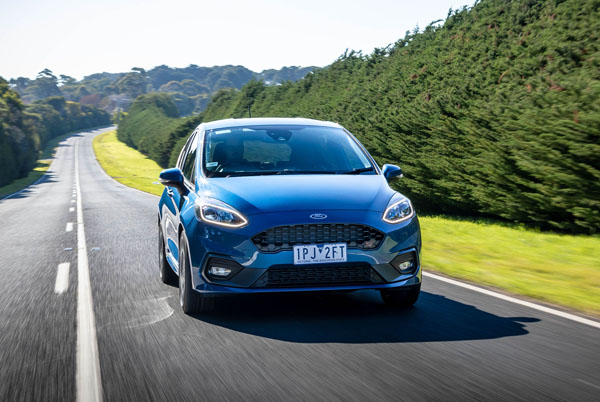
2019 Ford Fiesta ST
Many mechanics running their own independent businesses will have had formal training
while employed by Ford dealers in their earlier days in the business.
There are many hundreds of Ford dealers Australia wide. While some uncommon parts for
Fiestas may not be held in country dealerships it usually only takes a couple of business
days to have parts shipped out to them. We seldom hear any real complaints about prices
of parts or servicing on Ford Fiestas.
Insurance premiums for the standard Ford Fiesta models are about average for its class.
Some companies may charge more for the high-performance variants.
WHAT TO LOOK FOR
European cars aren’t always built to the very high standards of Japanese and Korean
ones, so be sure to arrange for a professional inspection.
Rust isn’t likely to be a problem unless a Fiesta has been poorly repaired after a crash.
Carefully check the interior for signs of damage due to poor assembly. This was less of a
problem the later the car model is, but it’s still best go give it a good look over.
Listen for squeaks or rattles when driving on rough roads, not necessarily unsealed ones.
These can be a sign of hard driving by would-be rally drivers. Beware…
A manual gearbox that hesitates or crunches during fast changes may be due for major
repairs or even replacement.
Try the steering on full lock at low speeds both all the way to the right and the left. Listen
for the clicking sounds that indicate worn universal joints.
A Fiesta XR4 that has been driven hard can often be identified by uneven tyre wear. Also
look for lowered suspension, big-diameter wheels with low profile tyres, and additional
instruments.
Look for paint finish that doesn’t match from panel to panel and for overspray on non-
painted areas.
HOW MUCH?
Expect to pay from $3000 to $6000 for a 2010 to 2012 Ford Fiesta CL; $5000 to $9000 for
a 2013 Zetec; $7000 to $11,000 for a 2015 Sport; $9000 to $14,000 for a 2017 Sport or a
2018 Trend; $11,000 to $17,000 for a 2015 ST; $13,000 to $19,000 for a 2016 ST;
$15,000 to $21,000 for a 2019 ST; and $21,000 to $30,000 for a 2020 ST.
CAR BUYING TIP
Owners of performance-oriented cars often form a club for them. This may involve cars
being used on club days on race track.
RECALLS: To browse recalls on all vehicles go to the ACCC at:
www.productsafety.gov.au/products/transport/cars/




